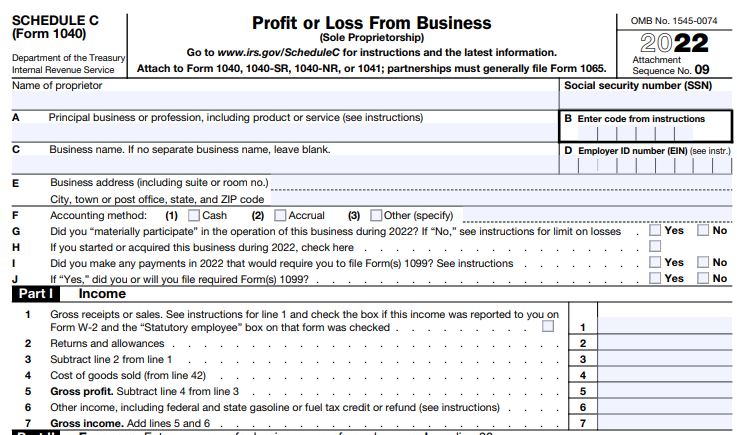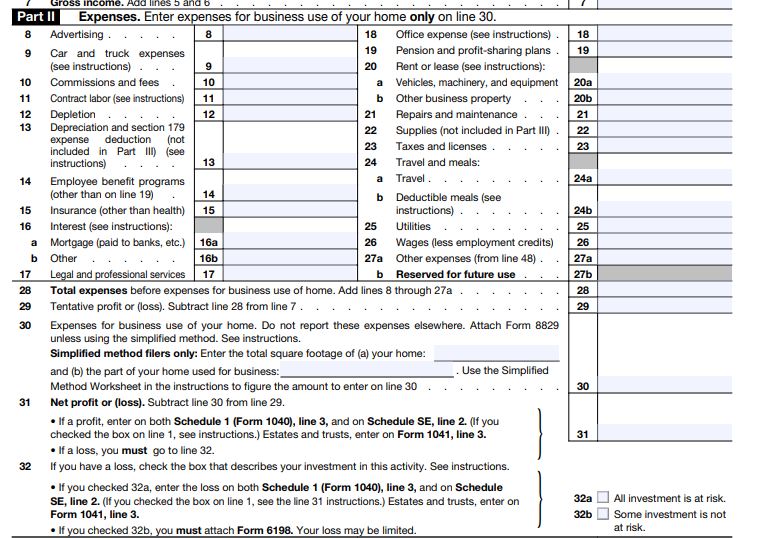Here is a list of the expenses categories that are pre-filled on the Schedule C with a few examples of what you could put in each category:
- 1. Advertising
- Newspaper ads
- Magazine ads
- Online ads
- 3. Commissions and fees
- Sales commissions
- Professional fees
- Bank fees
- 5. Depletion
- Natural resource depletion
- Oil and gas depletion
- Timber depletion
- 7. Insurance (other than health)
- Liability insurance
- Property insurance
- Business interruption insurance
- 9. Legal and professional services
- Legal fees
- Accounting fees
- Consulting fees
- 11. Pension and profit-sharing plans
- SEP (Simplified Employee Pension) plans
- SIMPLE IRA plans
- 13. Repairs and maintenance
- Equipment repairs
- Machine repairs
- Office space repairs
- 17. Utilities
- Electricity
- Gas
- Water
- Cable/ Internet
- 15. Taxes and licenses
- Sales tax
- Property tax
- Business licenses
- 19. Depreciation
- 2. Car and truck expenses
- Gas
- Oil
- Repairs
- Insurance
- 4. Contract labor
- Independent contractor fees
- Freelancer fees
- Consultant fees
- 6. Employee benefit programs
- Health insurance
- Retirement plans
- Paid time off
- 8. Interest
- Business loan interest
- Credit card interest
- Mortgage interest
- 10. Office expense
- Paper
- Pens
- Staplers
- 12. Rent or lease
- Office space rent
- Equipment lease
- Vehicle lease
- 14. Supplies
- Packaging materials
- Office supplies
- Cleaning supplies
- 16. Travel and meals
- Airfare
- Hotel
- Meals
- 18. Wages and salaries
- Employee wages
- Salaries
- Bonuses
Not every business will use all of these categories, and you may have some expenses that don’t fit in any of these categories. There is a section on the Schedule C form where you can put your expenses that don’t fit these categories and give them your own description.

